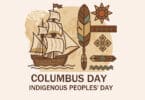Memorial Day, originally known as Decoration Day, has roots that stretch back to the aftermath of the Civil War. The war, which ended in 1865, claimed more lives than any conflict in American history and required the establishment of the country’s first national cemeteries. By the late 1860s, Americans in various towns and cities had begun holding springtime tributes to these countless fallen soldiers, decorating their graves with flowers and reciting prayers.
One of the earliest recorded instances of a Memorial Day-type observance was in Charleston, South Carolina, in 1865. Freed slaves and Union soldiers gathered to honor Union soldiers who had died in a Confederate prison camp. This poignant event set the stage for more formal commemorations across the country.
The Official Birth of Memorial Day
In 1868, General John A. Logan, leader of an organization for Northern Civil War veterans, called for a nationwide day of remembrance later that month. May 30th was chosen as Decoration Day because it wasn’t the anniversary of any particular battle. On that first Decoration Day, General James Garfield made a speech at Arlington National Cemetery, and 5,000 participants decorated the graves of the 20,000 Union and Confederate soldiers buried there.
The idea caught on, and by the end of the 19th century, Memorial Day ceremonies were being held on May 30th throughout the nation. States in the South, however, continued to honor their dead on separate days until after World War I.
Evolution into a National Holiday
Memorial Day evolved to honor not just those who died in the Civil War but all American military personnel who lost their lives in all wars. This shift occurred after World War I as the United States faced new challenges and losses on a global scale. The day became a unifying moment for a nation often divided by its Civil War past.
In 1968, Congress passed the Uniform Monday Holiday Act, establishing Memorial Day as the last Monday in May to create a three-day weekend for federal employees. This change was enacted in 1971, officially making Memorial Day a federal holiday.
Traditions and Symbols
How we observe Memorial Day has evolved, but the essence remains the same: honoring those who have died in military service to the United States. Traditional observances include:
• Visiting Cemeteries and Memorials: Many people visit cemeteries and memorials to honor those who have died in military service. Volunteers often place American flags on graves of military personnel in national cemeteries.
• Wearing Red Poppies: Inspired by the World War I poem “In Flanders Fields,” the red poppy became a symbol of remembrance and is often worn on Memorial Day.
• Parades: Cities and towns across the United States host parades, often incorporating military personnel and members of veterans’ organizations.
• Moment of Remembrance: Since 2000, a national moment of remembrance has taken place at 3:00 PM local time. This is a time for all Americans to pause in national unity to remember and honor the fallen.
Memorial Day in Our Family Histories
As genealogists, Memorial Day offers a unique opportunity to delve into our families’ military histories. Many of us have ancestors who served in various conflicts, and their stories can provide a profound connection to the broader narrative of American history.
Take the time to explore military records, pension files, and old letters. Visit the gravesites of military ancestors and participate in local ceremonies to honor their service. These activities enrich our understanding of our family histories and ensure that our ancestors’ sacrifices are remembered and honored.
A Closer Look at the Uniform Monday Holiday Act
The Uniform Monday Holiday Act of 1968 was a significant shift in how Americans observed Memorial Day and other federal holidays. The law aimed to provide more three-day weekends for the nation’s workers and was part of a broader move to simplify the federal holiday calendar. While this change made for more convenient long weekends, it also sparked debate about whether it diluted the significance of the holidays, especially Memorial Day.
The act also affected other holidays, like Washington’s Birthday, which was moved to the third Monday in February and is now commonly known as Presidents’ Day. The law intended to benefit the economy and the American workforce by encouraging travel and leisure activities over these extended weekends.
The Role of Memorial Day in Modern Times
Today, Memorial Day serves multiple roles. It is a solemn day of remembrance, a time for families to honor their loved ones who died in military service. Yet, it is also a celebration of the start of summer, marked by barbecues, picnics, and community events. This duality reflects the evolving nature of the holiday and the diverse ways Americans choose to observe it.
Despite its commercialization, many efforts are made to preserve the day’s original intent. Organizations like the American Legion and Veterans of Foreign Wars (VFW) play pivotal roles in ensuring that the sacrifices of the fallen are not forgotten. They organize parades, cemetery ceremonies, and educational programs to remind the public of the day’s true meaning.
Personal Stories: Bringing History to Life
To truly appreciate Memorial Day, it helps to connect with the personal stories of those who served and sacrificed. Genealogists often uncover remarkable tales of bravery and loss that add a personal dimension to this national observance.
For instance, consider the story of Private John Doe, an ancestor who fought in World War II. We learn about his journey from a small-town boy to a soldier in the European Theater through military records and personal letters. His letters home reveal his hopes, fears, and unwavering sense of duty. Sadly, he was killed in action, but his legacy lives on through these documents and the memories of his family.
Such stories are a powerful reminder of the individual lives behind the statistics. Each name etched on a memorial or gravestone represents a unique life story, a family forever changed by their sacrifice.
The Global Influence of Memorial Day
While Memorial Day is uniquely American, the concept of a day dedicated to honoring military dead is universal. Countries around the world observe similar holidays. For example:
• Remembrance Day: On November 11th in Commonwealth nations like the UK, Canada, and Australia, this day commemorates those who died in the World Wars and subsequent conflicts.
• ANZAC Day: Celebrated on April 25th in Australia and New Zealand, it honors the Australian and New Zealand Army Corps (ANZAC) members who fought at Gallipoli during World War I.
• Volkstrauertag: Germany’s National Day of Mourning, observed in November, honors all victims of war and violence.
These international observances highlight a shared human experience and the global impact of war. They also provide an opportunity to reflect on the broader implications of conflict and the universal desire for peace.
Conclusion: Honoring the Past, Shaping the Future
Memorial Day is more than just the unofficial start of summer. It’s a day steeped in history and significance, a day to reflect on the sacrifices made for our freedoms and to connect with the past in a deeply personal way. As we enjoy our barbecues and family gatherings, let’s also take a moment to remember and honor those who have made it all possible.
May your genealogical journeys be filled with meaningful discoveries! Memorial Day reminds us that history is not just a collection of dates and events but a series of lives and stories that continue to shape our world today. Let’s ensure that the legacy of those who served and sacrificed endures for future generations.






